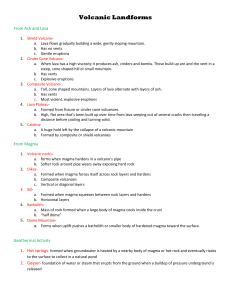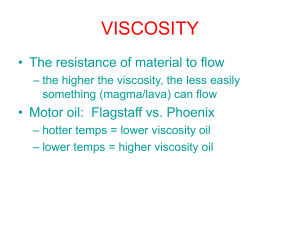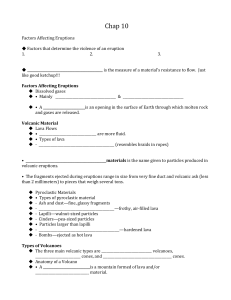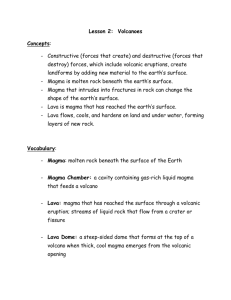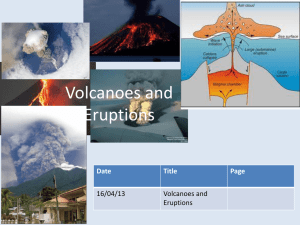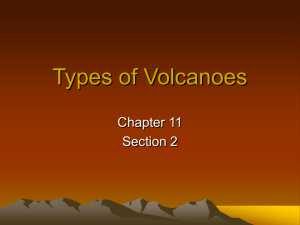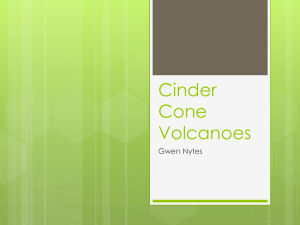Chapter 12 PowerPoint
advertisement
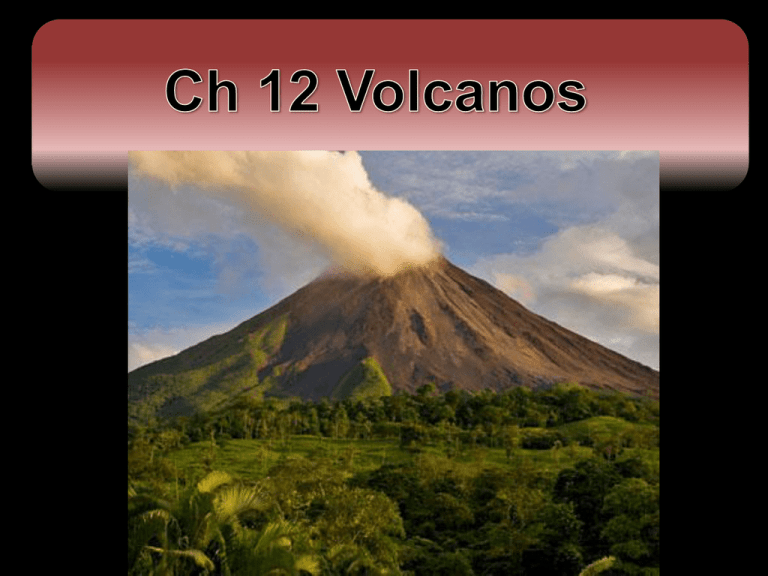
Igneous Processes Extrusive Igneous Formations Volcanoes • Openings in the Earth that erupt gases, ash, & lava. • Lava flows destroy everything in their path. • Pyroclastic flows (ash & debris) rush down the sides of the volcano. • Acid rain is produced when sulfurous gases mix with water vapor in the atmosphere. Parts of a Volcano –Magma collects in a magma chamber inside the Earth’s crust. –The opening where magma is forced up and flows onto the Earth’s surface is called a vent. –The steep-walled depression around a volcano’s vent is called the crater. Tephra Vent Magma Chamber Formation of Volcanoes –Form at Divergent & Convergent plate boundaries. –Hot Spots : »An unusually hot area between the mantle & core that forces melted rock upward to form volcanoes in the middle of tectonic plates. »Plate moves as the hot spot is stationary. Hawaiian Islands Ring of Fire 3. Volcanic Eruptions • The explosiveness of a volcano depends on: » Amount of water vapor & other gases trapped in the magma. » Amount of silica present in the magma. - Basaltic lava is low in silica & produces quiet, non-explosive eruptions: •Pāhoehoe (meaning "smooth, unbroken lava” =smooth, billowy, undulating, or ropy surface) •A’a (meaning "stony rough lava” = rough or rubbly surface composed of broken lava blocks) Pāhoehoe lava flowing over a’a Pāhoehoe lava flowing over a’a - Granitic & andesitic magma are high to intermediate in silica & produce violent eruptions. pyroclastic flow Types of Volcanoes Shield » Broad volcanoes with gently sloping sides. » Quiet eruptions of basaltic lava forming flat layers. Cinder Cone »Steep-sided volcanoes made of loosely packed tephra. »Tephra- bits of rock or solidified lava (pyroclastic material) like ash, cinders, bombs, & blocks. Composite • Volcanoes with alternating layers of tephra & lava flows. • Long dormancy periods • Violent eruptions • Also known as a stratovolcano Mount St. Helens Mount St. Helens after May 1980 eruption. Intrusive Igneous Formations Batholiths • Largest intrusive formations • Forms where magma has been forced up into chambers within the crust & cool slowly. Dikes • Magma that is forced into vertical cracks that cuts across rock layers and hardens. Sills • Magma that has been forced into cracks that are parallel to rock layers and then hardens. Volcanic Necks • The solid igneous rock core of an extinct volcano. • Weathering & erosion wear away the cone exposing the neck. Calderas • Large depression caused by the collapse of a crater during an eruption.



